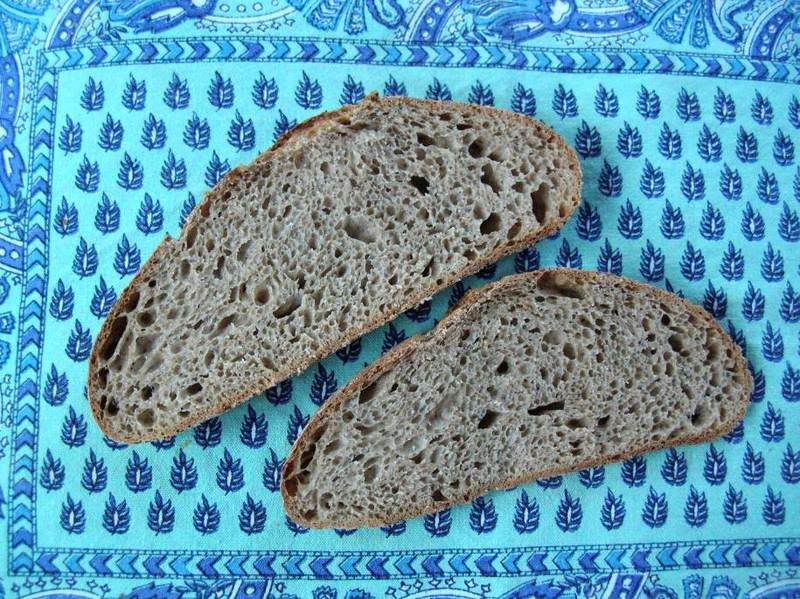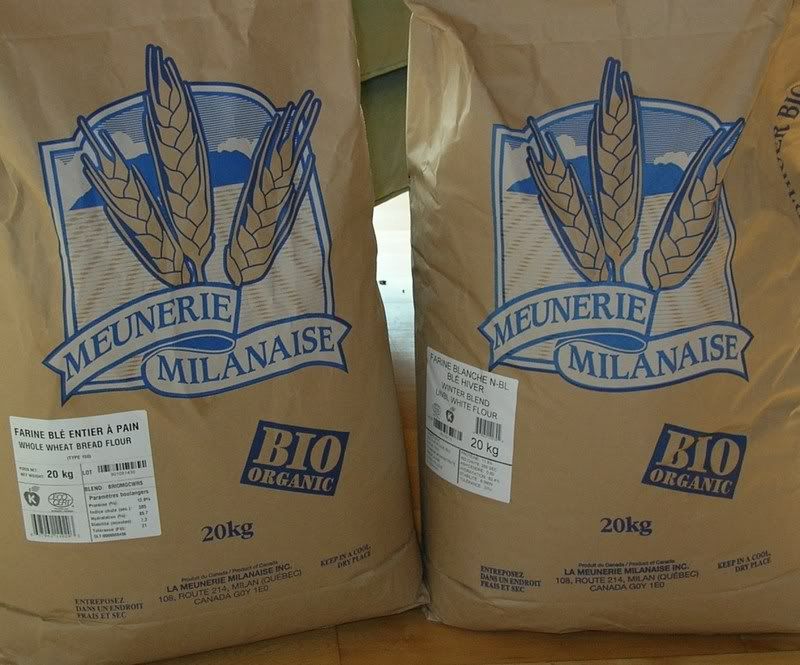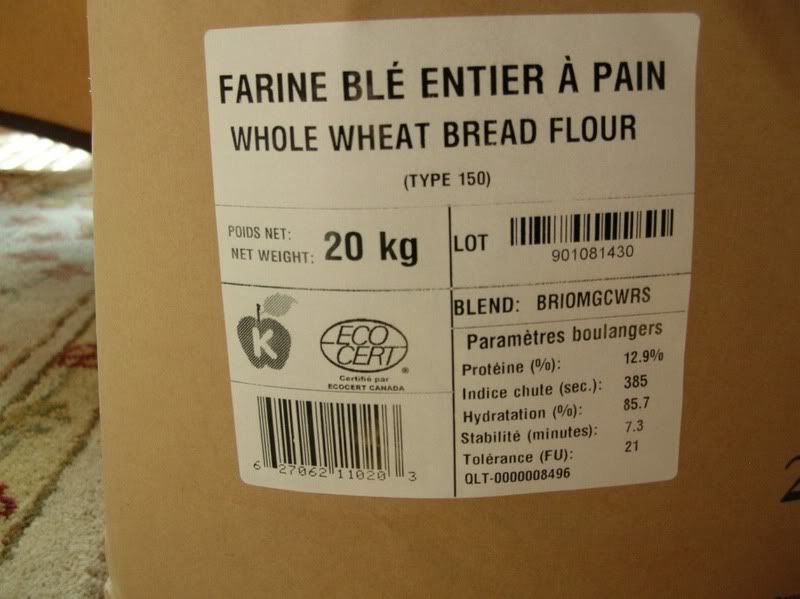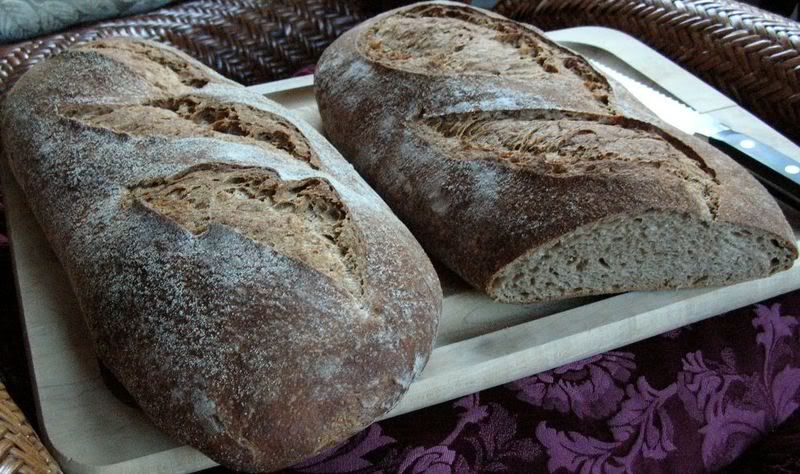
Hamelmans 5 Grain Levain...well almost


Hamelmans 5 Grain Levain
So after much discussion on these boards I finally decided to make this bread myself to see what all of the fuss was about. I can't believe I waited so long...This is absolutly one of the most delicous breads that I have ever tasted. I did make a few adjustments to the formula based soley on what I had available to work with (noted in formula below), but I tried to recreate the formula as close to the original as possible to get a sense of the bread in it's purest form. I also recalculated his formula so that I would end up with approx. 1200g of dough, which is the appropriate size to fit on my stone.
Liquid Build
- KAF AP Flour 128g 100%
- Water 160g 125%
- Mature Culuture(mine is 100% Hydration) 26g 20%
Soaker
- Bulger Wheat(The original formula calls for Rye Chops) 47g 27%
- Flaxseeds (mine happened to be golden) 47g 27%
- Sunflower Seeds 39g 23%
- Oats 39g 23%
- Boiling Water 204g 120%
- Salt 3g 2%
Final Dough
- KAF AP Flour(The orignal formula calls for hi-gluten flour) 255g 67%
- Fairhaven Mills Whole Wheat Flour 128g 33%
- Water 133g 35%
- Salt 9g 2.3%
- Soaker(all) 379g 99%
- Liquid Build 314g 82%
1. Liquid Build & Soaker-approx. 12 hours before mixing elaborate liquid build, and prepare grain soaker.
2. Mixing-As per the instructions in the book all of the ingredients are placed into a mixer and mixed on low speed for a few minutes to hydrate the flour. I found that I needed to add about 2 Tbsp more water. I suspect that the bulger wheat in the soaker absorbed more water than the rye chops would have. When the dough begins to come together increase speed to medium and mix until moderate gluten development is reached. Seeing as I didn't have any hi-gluten flour I mixed a little more thouroughly then I would have otherwise. On speed four in my kitchenaid mixer I mixed for 8 minutes, and I achieved a fairly high level of develpment.
3. Ferment- 3 Hours with a fold at 1.5 hours. (Orignal formula calls for 1-1.5 hours)
4. Divide- Divide the dough into 2 approx. 600g. portions.
5. Relax- shape the dough into loose boules, and allow to bench rest for approx. 20 minutes to allow for easier shaping.
6. Shape- shape the dough as desired and place between folds of bakers linen or in prepared bannetons. Round or ovals are what Hamelman suggests.
7. Proof- Approx. 1 hour at 76 deg. F., or alternatively retard in the fridge overnight for up to 18 hours.
8. Bake- 30-35 minutes for 600g. batards 460 deg F. on preheated stone with steam for the first half of the bake. Turn the oven off and prop open the door and allow bread to dry out for an additional 10 minutes before removing from the oven.
9.Cool- allow the finished bread to cool for at least 3 hours before cutting.
Final notes and Impressions
The crumb on this bread was unlike anything I have ever made before, it is incredibly soft, and creamy on the tongue. The crust was lightly crisp, and not as thick as I would have expected given the overnight retarding. I would definetly make sure this bread is cooked long enough, and hot enough as it has a good deal of water from the soaker, and it needs a thourough bake to fully dry out.
Dsnyder once refered to this bread as a "flavor bomb" and I would enthusiasticly agree with that assessment. It has wonderful tart notes from the levain, and a lovely complexity from the soaked grains. I hope you all get the chance to make this bread sometime to fully experience how delicious it is.
Happy Baking
Kevin













